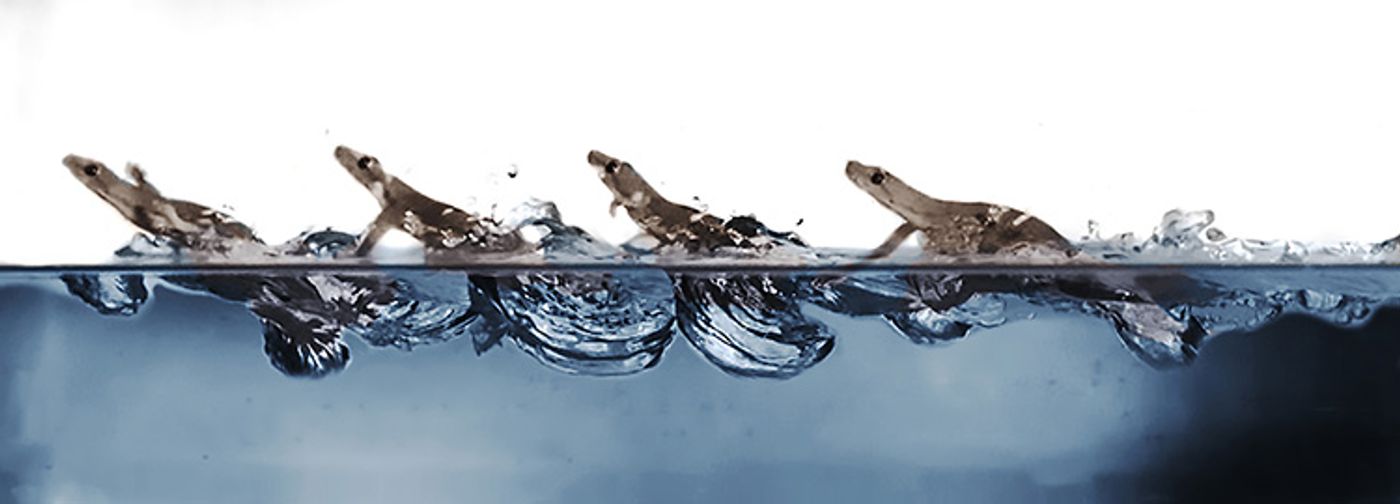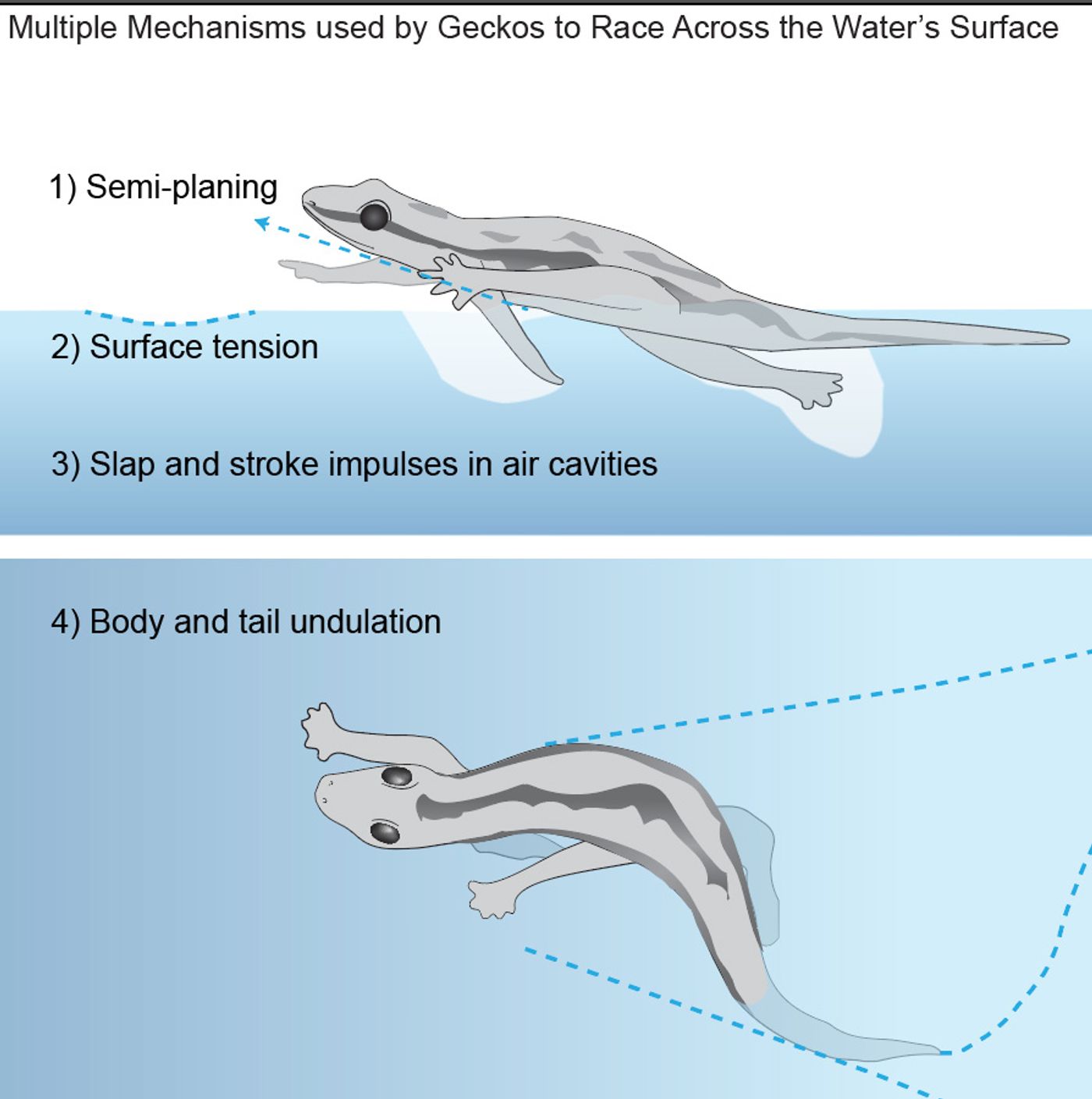Geckos Can Run Across Water, New Study Investigates How
Geckos are agile small reptiles that, with the help of their grippy little feet, sport the innate ability to scale vertical walls and perform incredible gliding stunts in the air. But as it would seem, these tiny creatures may also be adept at bolting across bodies of water in a pinch.
Image Credit: Pauline Jennings / PolyPEDAL Lab, UC Berkeley
Researchers from the University of California, Berkley allegedly discovered the behavior in the lab and later confirmed their findings in the wild after conducting field studies in Singapore. The results have appeared this week in the journal Current Biology.
“They can run up a wall at a meter per second, they can glide, they can right themselves in midair with a twist of their tail and rapidly invert under a leaf running at full speed. And now they can run at a meter per second over water. Nothing else can do that; geckos are superheroes,” commented Robert Full, a professor at UC Berkley and a co-author of the study.
Related: Why do some lizards have green blood?
The ability to run across a body of water isn’t unheard of in the animal kingdom; it’s common among insects, which are light enough not to break the delicate surface tension. Even the basilisk lizard – nicknamed the Jesus Christ Lizard for its abilities – can run across a body of water by cycling its legs so fast that it pushes against the water’s surface.
“Bigger animals can’t use surface tension, so they end up pushing and slapping the surface, which produces a force if you do it hard enough,” Full added.
But geckos aren’t technically big or small animals; instead, they’re somewhere in between. Consequently, they aren’t small enough to rely solely on surface tension to stay afloat, and they aren’t massive enough to push against the water as larger animals do. Instead, the researchers suggest, the geckos use a combination of two to four strategies to work their magic.
The researchers validated this theory after conducting experiments with flat-tailed house geckos (Hemidactylus platyurus) in the lab, which can be found everywhere in South and Southeast Asia.
As it would seem, surface tension plays an instrumental role in the geckos’ astonishing ability, but equally as important is the way they ‘slap’ their tiny feet across the surface of a body of water. This motion creates air cavities that prevent the rest of the gecko’s body from being sucked into the body of water as they glide across.
Also, the geckos take full advantage of their smooth, hydrophobic belly skin to glide across the water like a sled while simultaneously flapping their tail back and forth for added propulsion; this lets the reptiles ski across the water at high rates of speed to avoid predation when necessary.
Image Credit: PolyPEDAL lab graphic, UC Berkeley
“All are important to some extent, and geckos are unique in combining all these,” Full said.
Related: This lizard can drink water from the sand through its feet and back
Unfortunately, geckos aren’t quite as talented at running across a body of water as the famed basilisk lizard, that said, they can’t travel as far before the water eventually catches up to their reality-defying ruse.
Regardless, determining the hidden mechanisms that make this ability possible is vital for developing new technologies, so it wouldn’t be surprising to see more researchers begin studying the gecko’s water-running behavior in the future.
Source: UC Berkley, Current Biology










